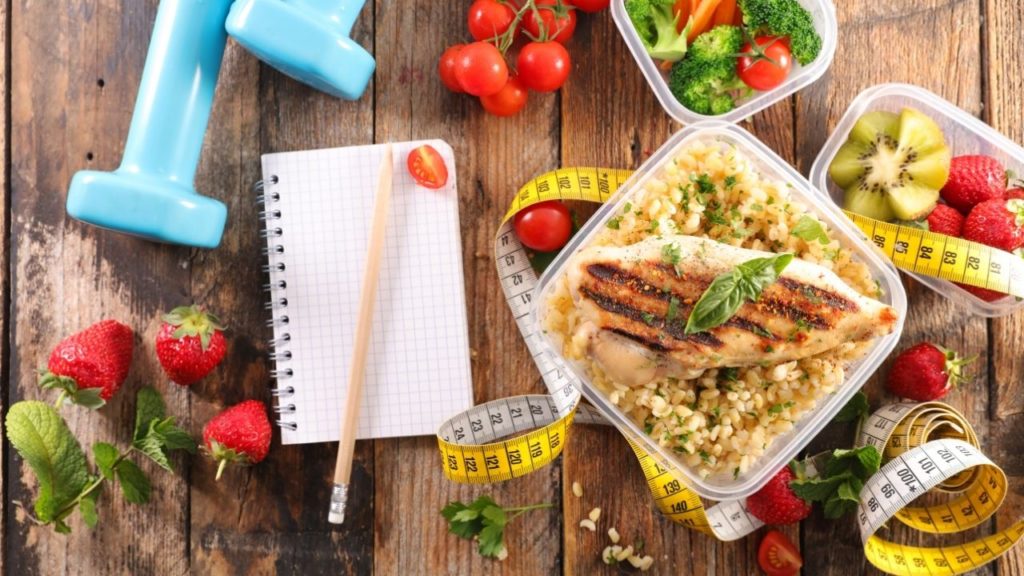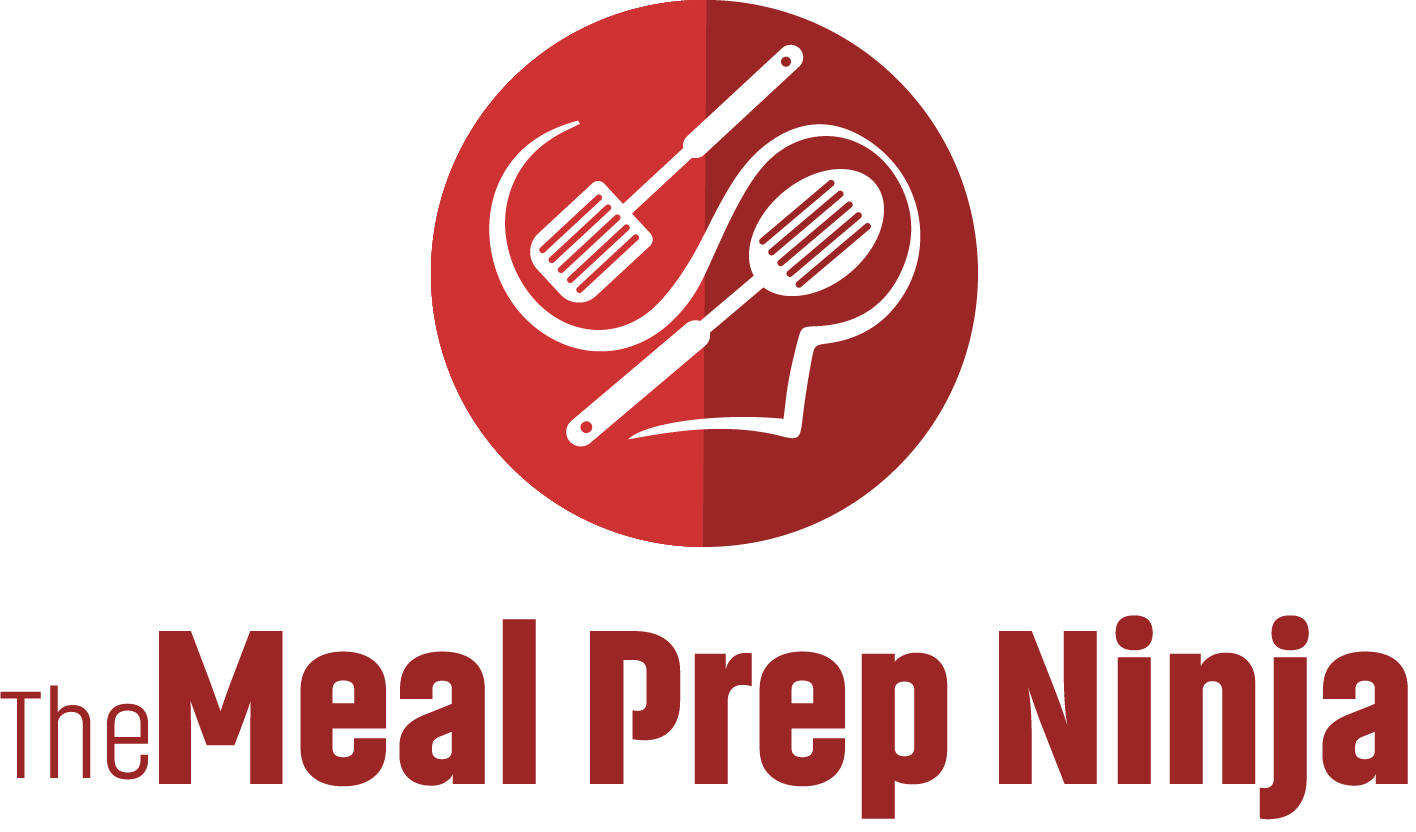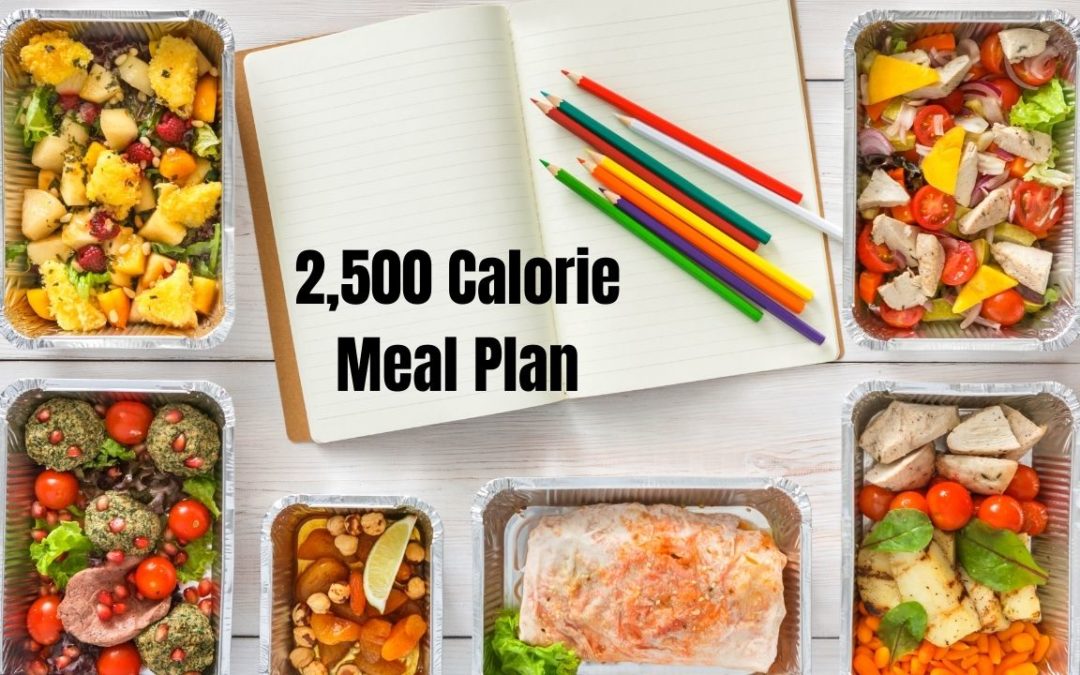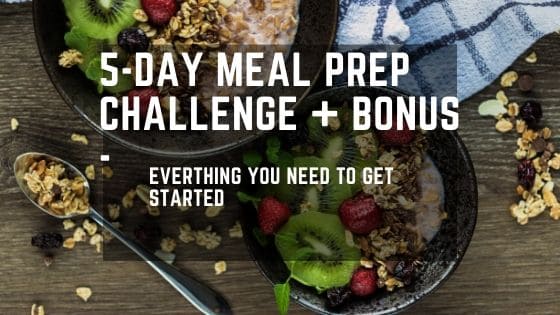Last Updated on March 15, 2021 by TheMealPrepNinja
Is a 2500 Calorie Meal Plan Up to The Task?: All That You Need to Know
Looking for a specific 2500 calorie meal plan? Did you know that 34.2% of American adults (20years and above) are overweight? As if that’s not enough, 33.8% are obese, and 5.7% are extremely obese. Shocking? Not yet! As a result, 37% of Americans suffer from cardiovascular diseases, 34% have hypertension, and 36% have prehypertension– blood pressure that’s way beyond the expected level but still not at the hypertension range.
The good part is that such ailments are preventable through smart eating.
Eating smart has never been easier. However, most people grapple with thoughts on developing a plan that addresses their nutritional needs. Ever wondered how a 2500 calorie meal plan looks like? We do understand if you’re a virgin meal planner but don’t beat yourself about it.
Whatever your mind runs to, we won’t judge. Whether it’s a freakingly large bowl of ice cream, a healthy plate of fruits and veggies, or a pile of fast food, it won’t matter what you drop on your plate as long as you target your daily calorie intake; right?
Exactly! But there’s a twist to it that a lot of peeps out there seem to overlook.
Since many believe that calories are calories, a 2500 calorie meal plan should have the same effect on one’s body despite their food options or choices. Such a plan can vary drastically in terms of nutritional composition, quantity, and quality. Most people tend to overlook how many calories are broken down into proteins, fats, and carbs. This will ultimately impact your general physique, general health, and performance.
Visualizing the 2500 Calorie Meal Plan
To help evoke what such a meal plan looks like as actual food on your plate, we’ve come up with different diet plans centered on the three macros; proteins, Carbs, and fats.
We have the (1) 20/50/30
(2) 30/20/50, and
(3) 40/40/20.
The first option represents what the typical American diet looks like. What follows is typically a low-carb, high-fat diet. The last option is the bodybuilder’s diet, representing a low-fat, high protein diet accustomed to many.
Evidently, you’ll hit your daily calorific intake with all three options. However, the food on your plate will vastly differ in appearance.
But before we determine what foods to eat, our assumption is you already calculated your calorie requirement. As an example, you could use a macro calculator to help you portion out your macros. The maths behind it is pretty straightforward (If you passed your grade 5 maths, you’ve got this).
Once you’ve figured out your calorific intake, choose your macro ratio. For example, let’s take the 40/40/20 split that works for most people.
- 40% of the total (1000) calories will come from proteins
- Another 40% (1000) calories come from carbs, and finally,
- 20% (500)calories come from fats.
By knowing how many calories you’ll eat from each subgroup, divide them by the calories in each gram of each macro. Each gram of proteins and carbohydrates contains 4 calories each, while fats have 9.
Therefore,
A 40/40/20 split results in 1000 calories of proteins, equivalent to 250g, another 1000 calories of carbs(250g), and 500 calories protein(55g). Easy peasy, right?
Now, once this framework is in place, all you have to do is substitute it with real foods. Most of these foods have their nutritional information embedded at the back so, take note while shopping.
Before we look at what foods to eat, you may ask or wonder whether a daily 2500 calorie meal is on the higher side. The calorie guideline hasn’t changed. Depending on your gender, it advises that women should hit 2000 calories while men should keep it at 2500 a day( inclusive of drinks). By surpassing the limit by 200-300 calories, problems such as weight gain and other ailments are bound to arise.
How to Pump up Your Body With a 2500 Calorie Meal: What Foods to Eat.
The following breakdown can be used as an example in a typical day, using the 40/40/20 split in hitting your daily calorie intake.
Breakfast
1 cup oats
1 cup blueberries
Maple syrup( 2 tablespoons)
1 cup eggwhite
2 whole eggs.
This results in 40g of proteins, 75g in carbs, and 15g in fats. The total calorific intake comes to 595.
Snack
For your pre-lunch snack, you could take,
1 medium apple and,
2 scoops of whey protein which results in,
50g of protein,
35g carbs and,
4g of fat totaling to,
376 calories
Lunch
Your lunch can consist of;
A cup of long-grain brown rice,
A cup of chopped and steamed broccoli,
6-ounce chicken breast
This results in 45g of both proteins and carbs and 6.5g of fats. (419 calories)
You may decide to snack up a bit before dinner time and indulge in a bag of sour cream and cheddar protein chips, 1 medium orange, and a scoop of whey protein resulting in,
46g protein, 64g in carbs, and 4g in fat. (476 calories)
Dinner
To cap it off, you could indulge in a
6-ounce steak,
A pat of butter,
15 chopped asparagus spears,
1 medium sweet potato and,
A cup of diced carrots with 2 tablespoons of extra virgin olive oil
What are the end results?
60g of proteins, 46g of carbs, and 28g of fats. (676 calories)
The summation of all meals comes to 2,542 calories.

A Basic Meal Plan For a 2500 Calorie Meal
In this context, meal planning isn’t just about saving you a boatload of money (coupons aside) but ensuring that you hit your daily calorific requirements. For the beginner, it may sound like an uphill task, but hey, keep your focus.
You might have pushed your calorific intake a bit too far. Let’s face it. No one goes from chowing down McDonald’s 4 times a week to a veggie smoothie for breakfast. It’ll also be advisable to start at your current point and work with your personality instead of against it. Let’s face it. You may not be the type to drive past a chick-fill- a when hunger pangs strike.
So, what are the essential meal plan tips for maintaining your calories at the appropriate range?
The 15-Minute Meal Hack
This is for the extremely hectic weeks where you work late and out of your house. The temptation of eating fast food is rife. The 15-minute meal hack uses convenience foods and may not be the healthiest option, but it’s super fast and costs less than a drive-thru. Not only is it quicker and costs less, but you could also use paper plates to minimize dishes.
Examples include; Greek salad and broiler steaks, Chicken parmesan pasta, and pepperoni pizza bagels.
The key is making sure that your portion your meals in an appropriate way with respect to your macro goals.
The advantage to this is that there’s no meal prep, cooking skills, or defrosting involved.
CrockPot Meals
This is best for those who won’t be away from the house for more than 10 hours but still don’t want to spend time cooking. Crockpot simmers meals for up to 8 hours and keeps them warm for an additional 2 hours. We assume that you have a functional meal plan in place; therefore, portion your parts according to your daily calorific requirements. Let them slowly cook in time for your lunch or dinner.
Here is one of my favorite Slow Cooker recipes:
Freezer Cooking
If you have an extra day off or some spare time on the weekend, you could batch cook your portions according to your daily calorie requirements and freeze them up for later use. It’s a much better option compared to buying preservative-filled and expensive convenience foods.
Freezer Dump Cooking
Once you portion out your meals in terms of calories, empty them in a bag and freeze them. Thaw them and dump them inside the crockpot once you are ready to eat them. This way, you get an easier avenue in attaining the calories you need in the quickest possible way.
Backward Meal Planning
Maybe you stocked up your fridge earlier. Go through your fridge and freezer, taking stock of what you have, and come up with a combination of appropriate meals to cater to your calorific needs.
Though it saves you a ton of money, it’s harder for a meal planning newbie to kick off. However, it pays to include it in your meal plan since it gives you huge savings.
Eating Out
Contrary to what most believe, eating out shouldn’t be a sin in itself. There are rare occasions where eating out seems more sensible than having home-cooked meals. The only downside to it is mindlessly eating outside (cost implications).
‘Further, restaurants and hotels are known to serve significant portions that may likely change the calorie composition. You may end up piling extra calories that may prove challenging to get rid of ( only consume what you need).
Why planning your plate ahead of time Can make all the Difference
Whether you’re trying to gain or shed off some extra weight, or just improve your nutrition, Planning in advance makes all the difference. There are many advantages associated with meal planning and below are just a few;
Portion Control
If your goal is to lose weight, planning in advance will limit the number of portions. You’ll less be likely to overeat hence adding more calories than what the body requires.
Having the correct meal prep containers is vital when it comes to portion control.

Saves Time
Advanced planning rids you of the negative experience of thinking when to shop, what to eat, and cleaning up after meals. It means no more last-minute shopping trips and overspending.
Food Waste Reduction
This is what really stands out when you put meal planning and calorific intake on one plate. Since you know what your body needs (grams), you could plan well in advance, portioning out meals accordingly to meet your goals.
Avoiding Unhealthy Options
Some look at calories as just calories no matter where it comes from, and though it is true, what transpires later when calories get broken down is what makes all the difference. Quality and nutrition are key that will ultimately determine your physique, performance, and general wellness.
Variety
Busy schedules are a recipe or catalyst for boring, bland, and repetitive meals. However, meal planning gets rid of this. Different portions can be accorded on other days according to your preference while hitting your daily calorific target.
So, why is it essential to track your calories?
Calorie tracking is a proven time-tested way of either losing or gaining weight. The following are reasons why tracking your calories work;
- Tracking calories is a vital way that monitors which feeding pattern works best in gaining or losing weight.
- Though not precise, calorie tracking provides an approximation from where to start from and when comparing against during your weight loss or weight gain journey.
- It comes with behavioral benefits since you can monitor your feeding behavior. You’ll be accountable for your daily choices in terms of what you eat. It will, in turn, motivate you in your progression towards your goals.
- Most of all, it’s free. You don’t need to subscribe to expensive weight loss plans nor monthly subscriptions. The only thing you require is an app to track what goes in.
- Tracking your calories provides a platform for visualizing your transformation. It’s all psychological. When you see the weight shedding off or piling on, you’ll continue making conscious decisions to further propel you to your goals.
2500 Calorie Meal Plan, As we cap it off,
You don’t need expensive gym subscriptions or celebrity fad diets to attain your goals. What matters is what goes in, and what better way to do this than tracking your calories? Next time you look into the mirror, you’ll be shockingly amazed at the wonders of what a 2500 calorie meal plan can do to your body.

Jim Lopez, the founder and editor of The Meal Prep Ninja, shares his journey from a passionate bodybuilder and fitness enthusiast to a certified nutrition coach. Certified by Precision Nutrition, Jim aims to empower others with knowledge on meal prep and nutrition, offering resources for busy individuals to enjoy low-calorie, tasty foods. His blog is a community for sharing healthy eating habits and meal prep recipes



